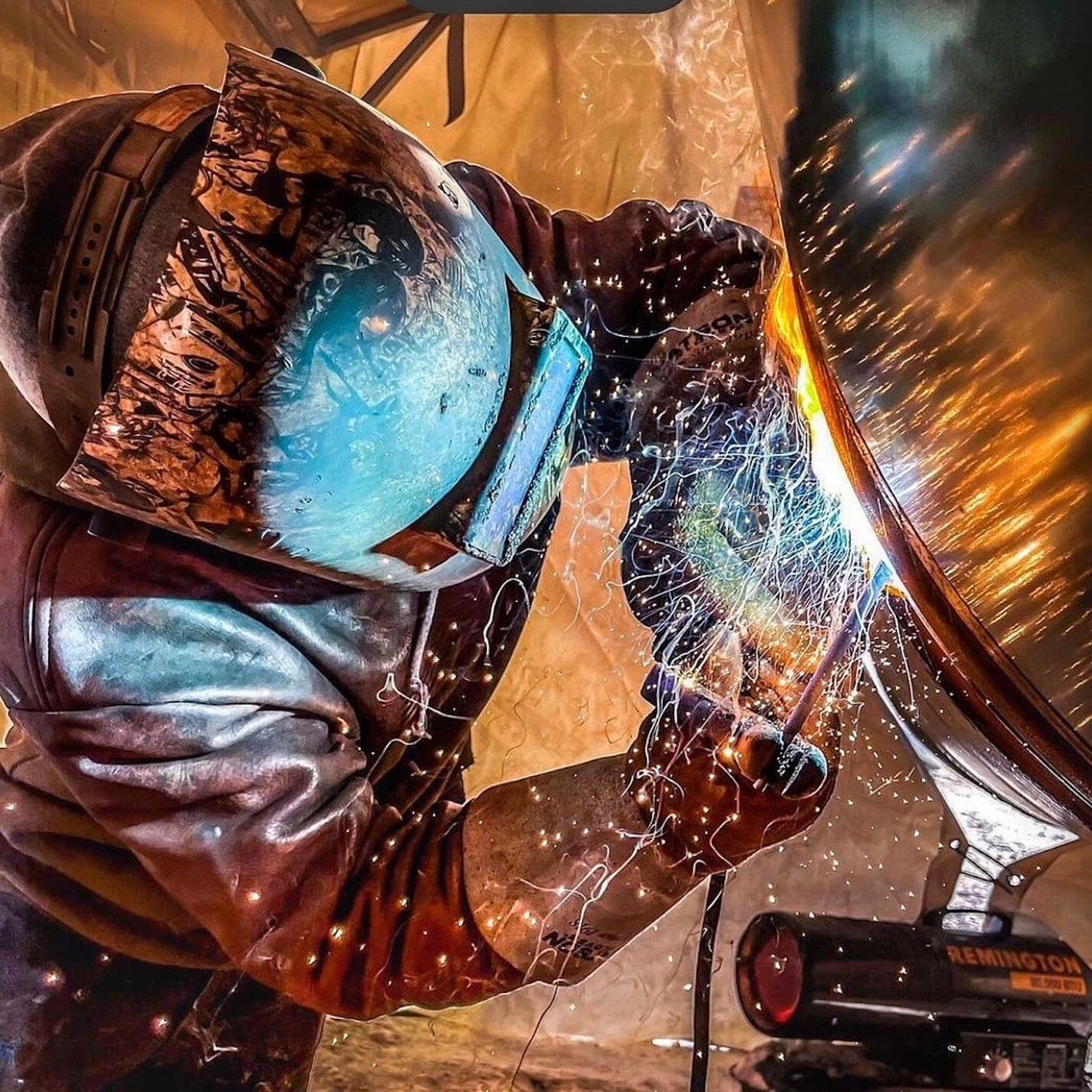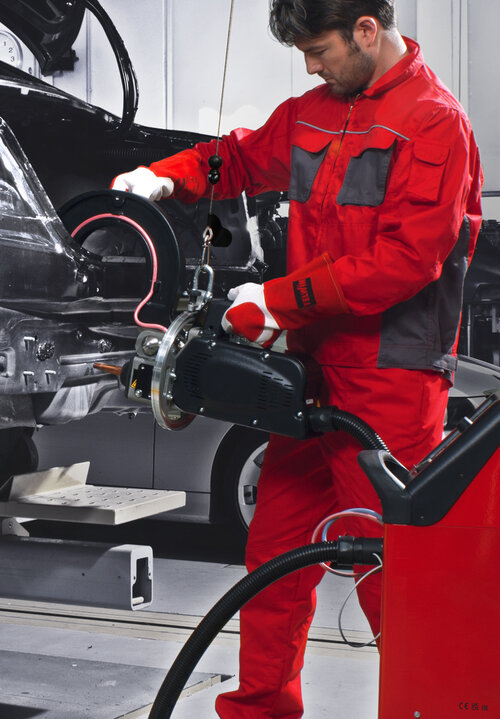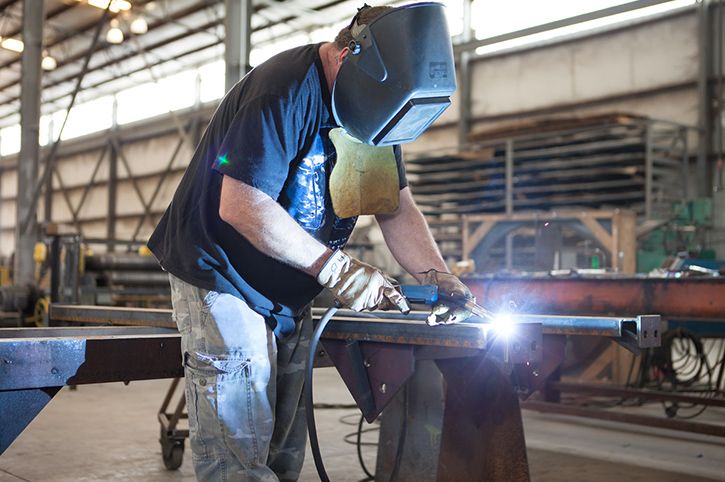Common Welding Repair Service Issues and Exactly How to Address Them Effectively
Welding repair work commonly experience a variety of concerns that can jeopardize the honesty of the final item. Typical issues include insufficient penetration, porosity, and misalignment, amongst others. Each defect provides unique difficulties that need certain methods for resolution. Recognizing these issues is important for welders aiming to boost their skills and outcomes. This conversation will certainly explore these typical welding fixing concerns and reliable techniques to resolve them.
Poor Infiltration
Inadequate infiltration occurs when the weld metal fails to totally fuse with the base material, causing weak joints and prospective architectural failures. This concern often originates from not enough warm input, inaccurate electrode angle, or improper welding rate. Welders might come across inadequate infiltration due to a mistake of the required parameters for a details material density or kind. In addition, contamination on the base product's surface area can hinder efficient bonding, exacerbating the trouble. To resolve inadequate infiltration, welders should ensure ideal settings on their tools and preserve a clean work surface area. Normal examination of welds is suggested to determine any shortages early, permitting prompt modifications and the avoidance of jeopardized architectural integrity in welded settings up.
Porosity
Porosity is a common defect in bonded joints that materializes as small gas bubbles trapped within the weld steel. This defect can compromise the integrity of the weld, bring about reduced toughness and possible failing under anxiety. Montana Mobile Welding and Repair Belgrade Welding. Porosity normally develops from contamination, dampness, or inappropriate welding methods, which permit gases to escape into the liquified weld pool. To attend to porosity, welders must ensure appropriate surface preparation, keep a tidy workplace, and utilize appropriate welding parameters. In addition, picking the best filler product and shielding gas can minimize gas entrapment. Regular evaluation and testing of welds can help recognize porosity early, guaranteeing timely rehabilitative actions are taken, thereby preserving the high quality and reliability of the welded framework
Imbalance
Imbalance in welding can develop from numerous elements, consisting of inappropriate setup and thermal development. Comprehending the source is necessary for effective resolution. Numerous correction methods are offered to straighten elements and guarantee structural integrity.
Root causes of Imbalance
Welding imbalance usually comes from a selection of underlying concerns that can endanger architectural integrity. One primary cause is inappropriate fit-up of elements before welding, which can cause gaps and unequal surface areas. Variants in thermal expansion throughout the welding procedure can additionally cause distortion, especially if the products being joined have different coefficients of expansion. Additionally, insufficient clamping and fixturing may fail to hold components securely in location, resulting in activity during welding. Inadequately kept devices, consisting of welding machines and tools, might present incongruities in the weld grain, more adding to imbalance. Driver mistake, stemming from insufficient training or experience, can likewise play a significant function in developing misaligned welds.

Adjustment Strategies Available
Attending to imbalance efficiently needs a mix of corrective strategies tailored to the certain issues available. One usual approach is the usage of jigs or fixtures to hold parts in the correct placement during welding, ensuring regular positioning. In addition, pre-heating the products can assist minimize distortion and boost fit-up. For substantial misalignment, mechanical realignment strategies, such as utilizing hydraulic jacks or clamps, can be utilized to fix the position before welding. Post-weld warmth therapy may additionally be essential to ease tensions triggered by misalignment. Cautious examination and change throughout the arrangement stage can protect against misalignment problems from becoming significant issues, advertising a smoother welding procedure and enhancing overall structural honesty.
Distortion
Distortion is a typical obstacle in welding that can develop from different variables, including unequal heating and air conditioning. Recognizing the sources of distortion is essential for carrying out effective avoidance strategies. Resolving this concern not just improves architectural integrity yet also enhances the total quality of the weld.
Reasons of Distortion
When subjected to the intense heat of welding, materials usually undertake changes that can bring about distortion. This phenomenon mainly occurs from thermal development and tightening during the welding procedure. As the weld location warms up, the material expands; upon air conditioning, it contracts, which can create inner stresses. In enhancement, unequal heating across a work surface can intensify these stress and anxieties, causing warping or bending. The kind of material also plays a substantial role; metals with varying thermal conductivity and coefficients of growth may respond in a different way, causing unforeseeable distortions. Inadequate joint style and poor fixturing can contribute to imbalance throughout welding, enhancing the possibility of distortion. Recognizing these reasons is necessary for efficient welding repair work and prevention techniques.
Avoidance Techniques
Reliable avoidance strategies for distortion during welding emphasis on controlling warm input and making certain proper joint layout. Maintaining a constant warm input helps to minimize thermal development and contraction, which can lead to distortion. Making use of strategies such as preheating the work surface can also cebora mig welder decrease the temperature gradient, advertising uniform heating. In addition, choosing ideal joint styles, such as T-joints or lap joints, can enhance stability and lower stress concentrations. Executing correct fixturing to protect the work surfaces in area even more help in keeping alignment throughout the welding procedure. Lastly, staggered welding sequences can distribute heat extra evenly, stopping local distortion. By using these methods, welders can significantly decrease the possibility of distortion and improve the general quality of their welds.
Breaking
Fracturing is an usual problem experienced in welding fixings, typically arising from various variables such as improper cooling prices, product choice, or poor joint prep work. The incident of splits can substantially compromise the stability of the weld, leading to potential failures during procedure. To resolve this problem, welders need to first evaluate the source, ensuring that products work and suitably chosen for the certain application. In addition, controlling the air conditioning price throughout the welding procedure is important; fast cooling can cause stress and lead to breaking. Correct joint design and preparation also add to minimizing the danger. Applying these strategies can enhance weld quality and durability, inevitably decreasing the probability of breaking in finished weldments.

Incomplete Blend
A significant problem in welding repair services is incomplete fusion, which happens when the weld metal does not properly bond with the base material or previous weld passes - Welding. This defect can cause weaknesses in the joint, possibly endangering the honesty of the welded structure. Elements adding to incomplete fusion include insufficient heat input, inappropriate welding strategy, and contamination of the surfaces being joined. To resolve this issue efficiently, welders should ensure appropriate pre-weld cleaning and surface area preparation, as well as adjust their welding specifications to accomplish appropriate penetration and fusion. Regular inspection throughout the welding procedure can also help identify insufficient blend early, permitting prompt rehabilitative measures to enhance the general high quality of the weld
Overheating
While welding repairs can boost structural stability, overheating provides a substantial obstacle that can lead to material destruction. Extreme warm during welding can modify the mechanical residential properties of steels, resulting in lowered toughness, enhanced brittleness, and warping. This phenomenon is specifically vital in high-stress applications where structural integrity is paramount. Recognizing getting too i thought about this hot can involve aesthetic assessments for staining or distortion, as well as checking temperature during the welding process. To minimize the dangers associated with overheating, welders must use suitable strategies, such as managing heat input, adjusting travel rate, and using suitable filler materials. Additionally, executing pre- and post-weld warm therapies can assist restore material buildings and improve the overall top quality of the fixing, making sure long-lasting efficiency and safety and security.
Frequently Asked Concerns
What Are the Common Indications of a Welding Issue?

Exactly How Can I Check My Welds for High quality?
To evaluate welds for quality, one can make use of visual inspections, ultrasonic testing, and radiographic methods. Each method assures architectural honesty, identifies defects, and validates adherence to specified requirements, eventually improving the dependability of the bonded joints.
What Safety Precautions Should I Take While Welding?
When welding, one need to focus on security by wearing ideal individual protective devices, guaranteeing appropriate ventilation, protecting combustible products away, keeping a tidy work area, and understanding surroundings to protect against accidents and injuries.
Can I Fix a Weld Without Redoing the Entire Joint?
Repairing a weld without renovating the entire joint is feasible, relying on the damages (Welding). Strategies such as grinding, adding filler product, or utilizing a welding procedure can successfully attend to specific defects while protecting the surrounding structure
What Tools Are Necessary for Efficient Welding Services?
Necessary devices for effective welding fixings include a welding equipment, cable brush, grinder, protective gear, clamps, and filler materials. Each device plays an essential duty in making certain high quality and safety and security during the repair work process. Porosity usually occurs from contamination, wetness, or improper helpful site welding techniques, which permit gases to get away into the molten weld pool. Improperly kept tools, consisting of welding equipments and tools, might introduce inconsistencies in the weld grain, further adding to imbalance. When subjected to the intense warmth of welding, products frequently go through changes that can lead to distortion. Cracking is a typical problem come across in welding fixings, typically resulting from numerous elements such as incorrect cooling rates, product option, or inadequate joint prep work. A significant concern in welding repair work is incomplete fusion, which occurs when the weld steel does not adequately bond with the base material or previous weld passes.